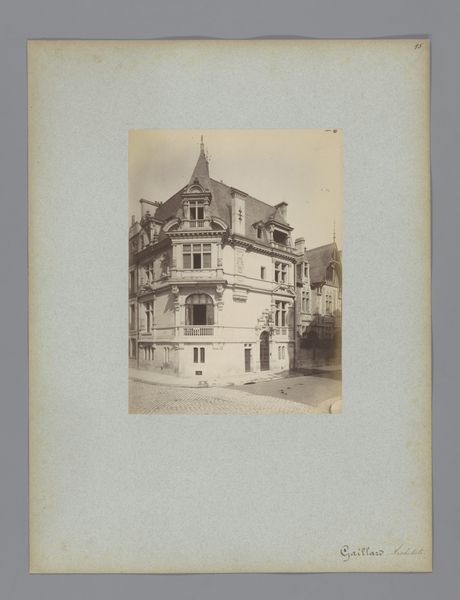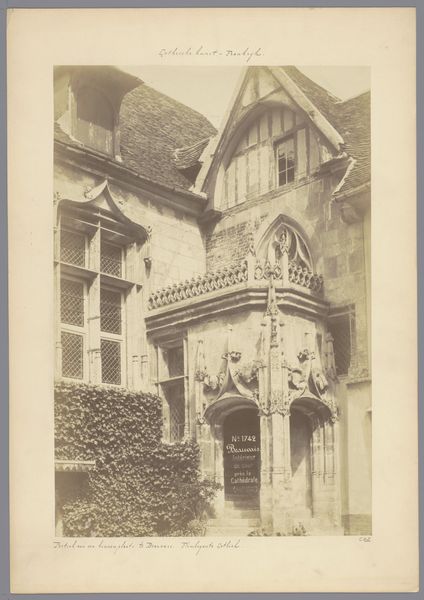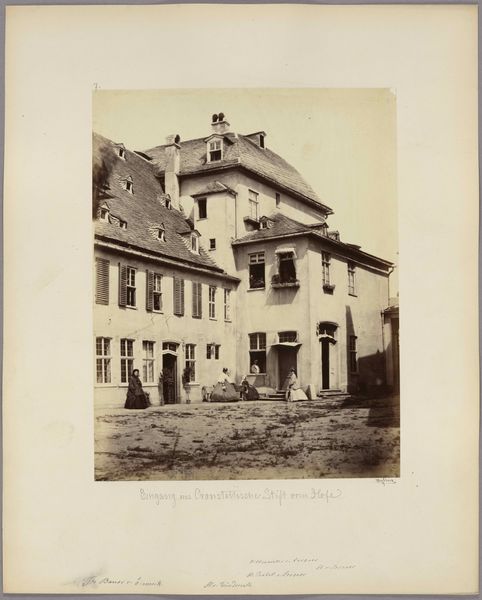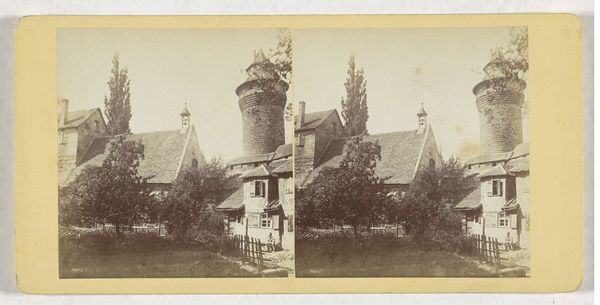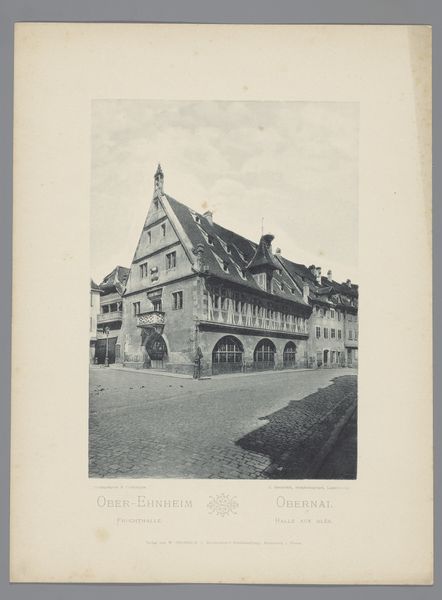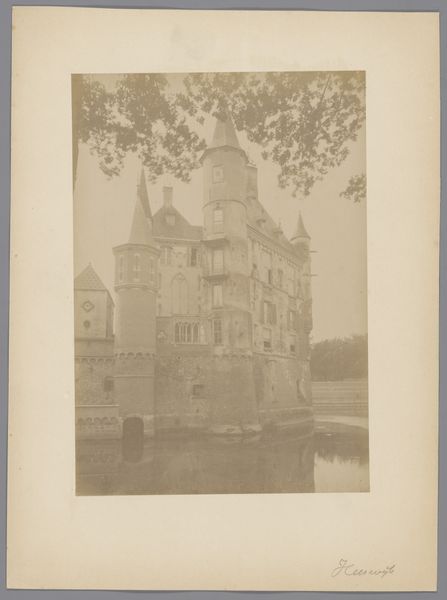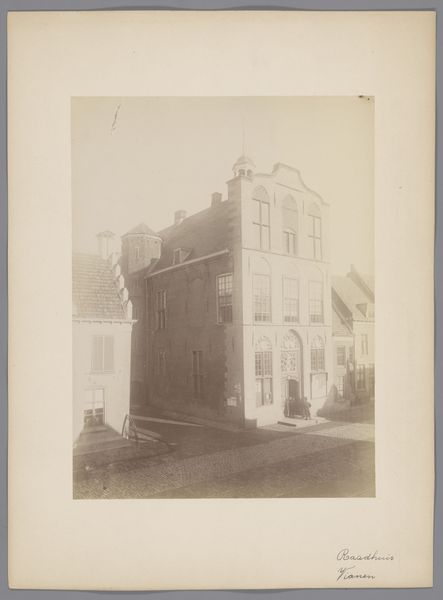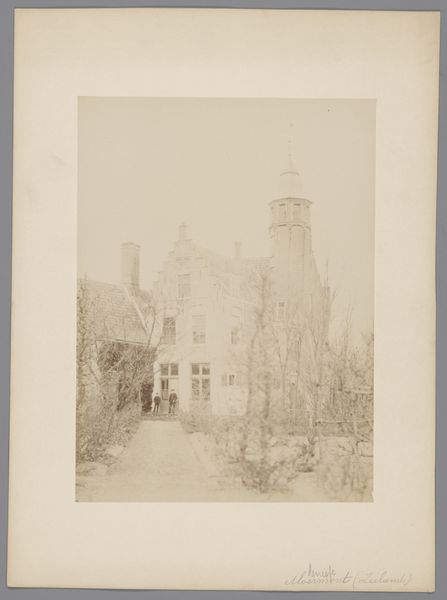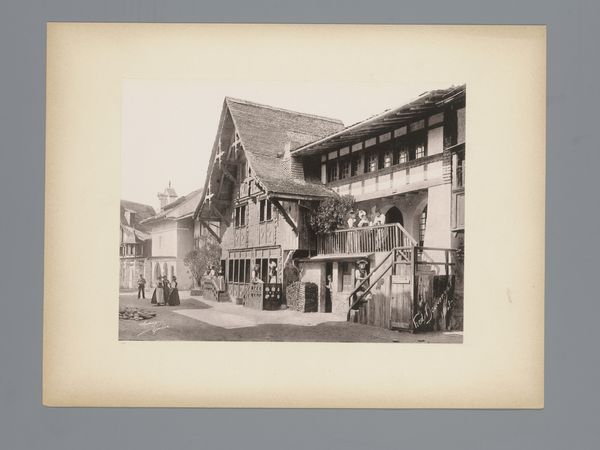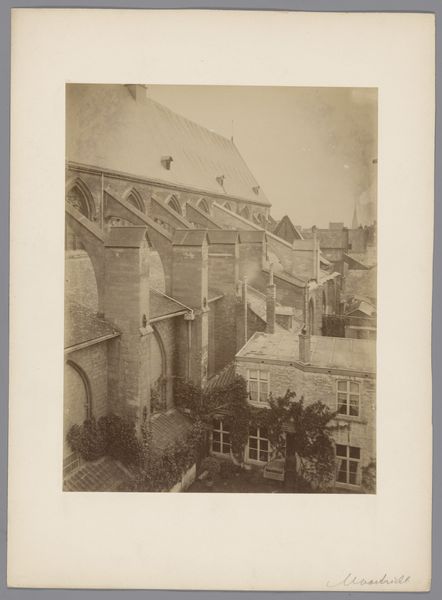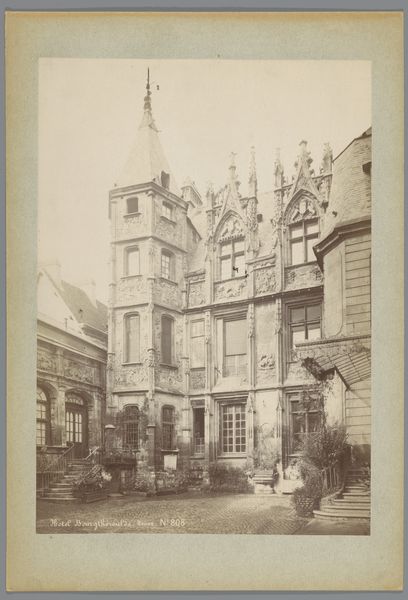
Exterieur van het Maison des Vieux-Consuls te Chartres c. 1875 - 1900
0:00
0:00
medericmieusement
Rijksmuseum
photography, albumen-print
#
landscape
#
photography
#
orientalism
#
albumen-print
#
realism
Dimensions: height 355 mm, width 250 mm
Copyright: Rijks Museum: Open Domain
Editor: Here we have Mèdèric Mieusement's photograph, "Exterior of the Maison des Vieux-Consuls in Chartres," an albumen print dating from around 1875 to 1900. I'm immediately struck by the almost playful way the photographer captures the spiraling staircase tower. How does the historical context shape your understanding of this image? Curator: That playful element is interesting, isn't it? Mieusement wasn’t simply documenting architecture. Think about the rise of photography during this period. It's becoming a tool for shaping public perception and national identity. Images like this circulated widely, often becoming postcards, reinforcing certain idealized versions of French heritage. This house, associated with the "Old Consuls," carries political weight, reminding viewers of a particular kind of civic history. The photographer positions the house, quite literally framing the narrative through a certain "touristic gaze." Does that figure at the window, hanging outside of it, further complicate or reinforce this sense of carefully staged "realness?" Editor: So, it’s less about pure documentation and more about constructing a visual narrative. How much control did Mieusement have over this narrative? The staged "realness" prompts more questions. Curator: That's key! While Mieusement undoubtedly had artistic control over the framing and composition, the social and political context in which this image was produced also exerts a strong influence. Photography was often used to legitimize existing power structures and construct a sense of shared national identity. Consider the market for such images and who it served. Who was buying and circulating images of “authentic” France? Editor: It’s interesting to think about photography's role in shaping a national narrative rather than just capturing reality. The image's purpose and who it's for dramatically shift the interpretation. I hadn’t considered that layer before! Curator: Precisely! Seeing art as a product of its time, influenced by cultural forces, changes everything. We begin to unpack not just *what* is shown, but *why* and for *whom*.
Comments
No comments
Be the first to comment and join the conversation on the ultimate creative platform.
